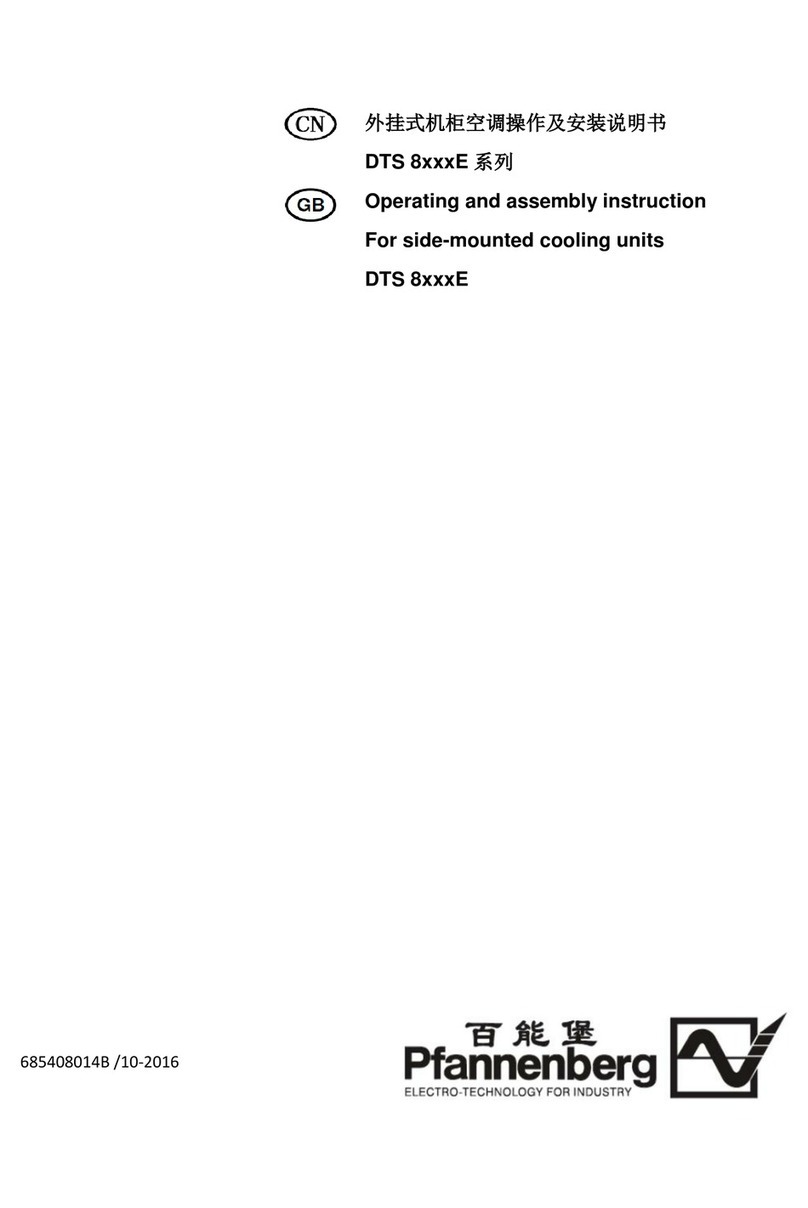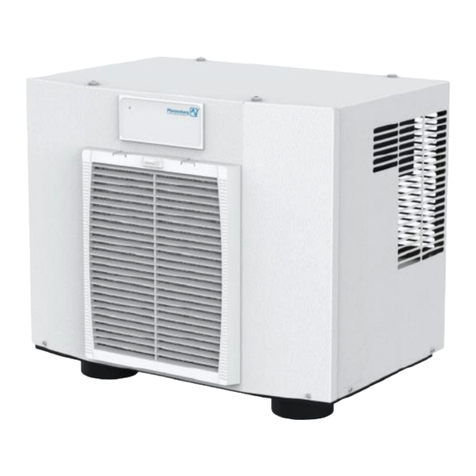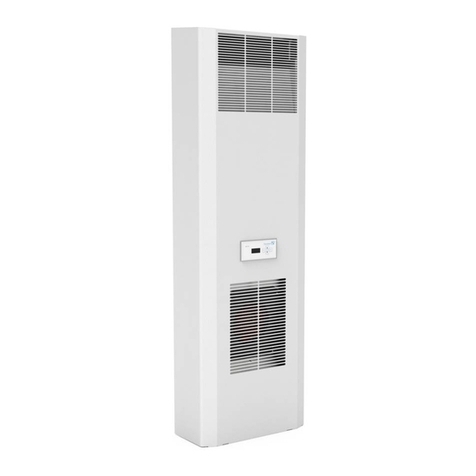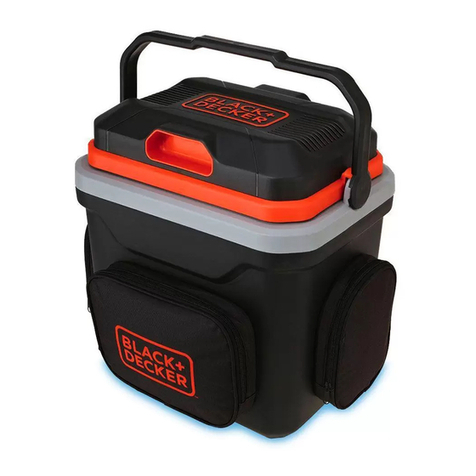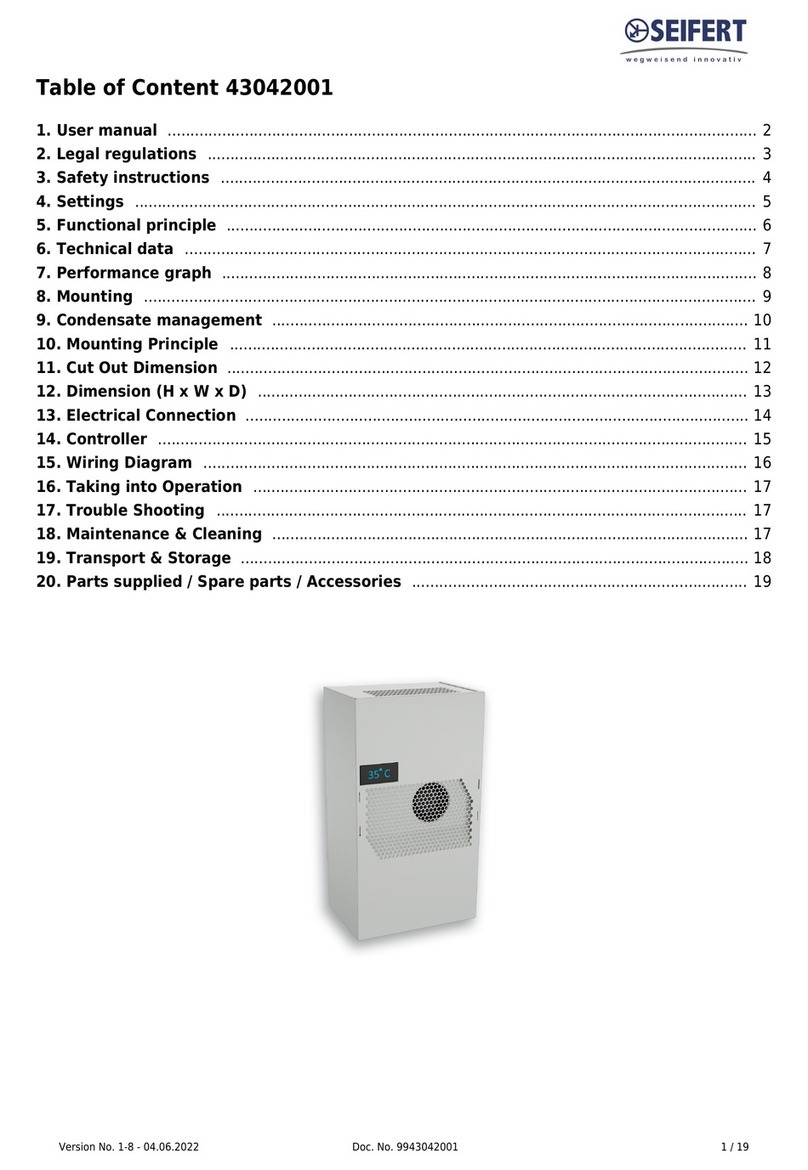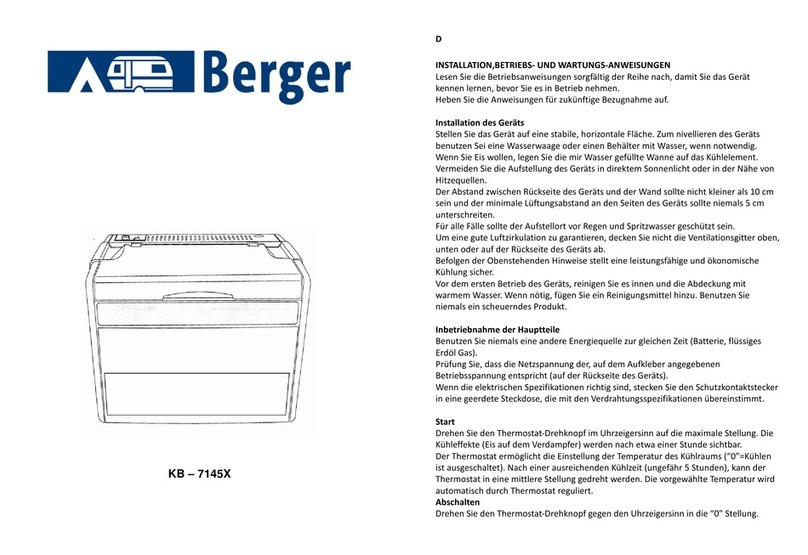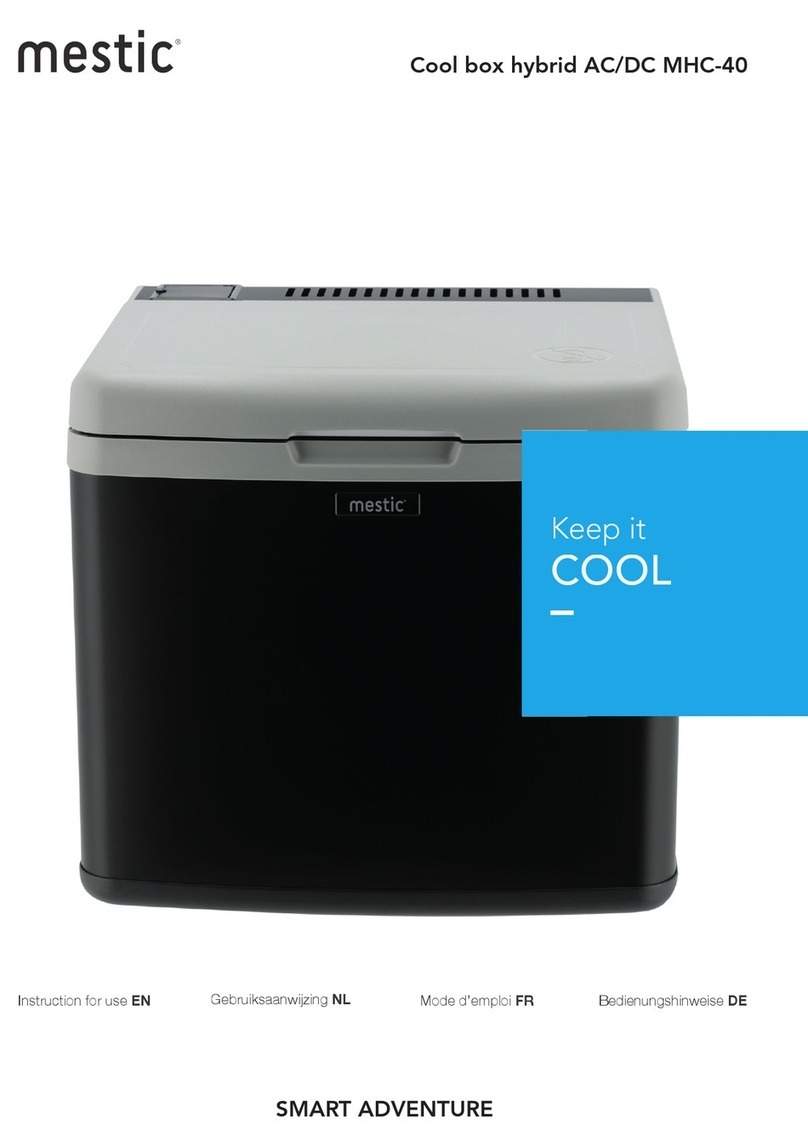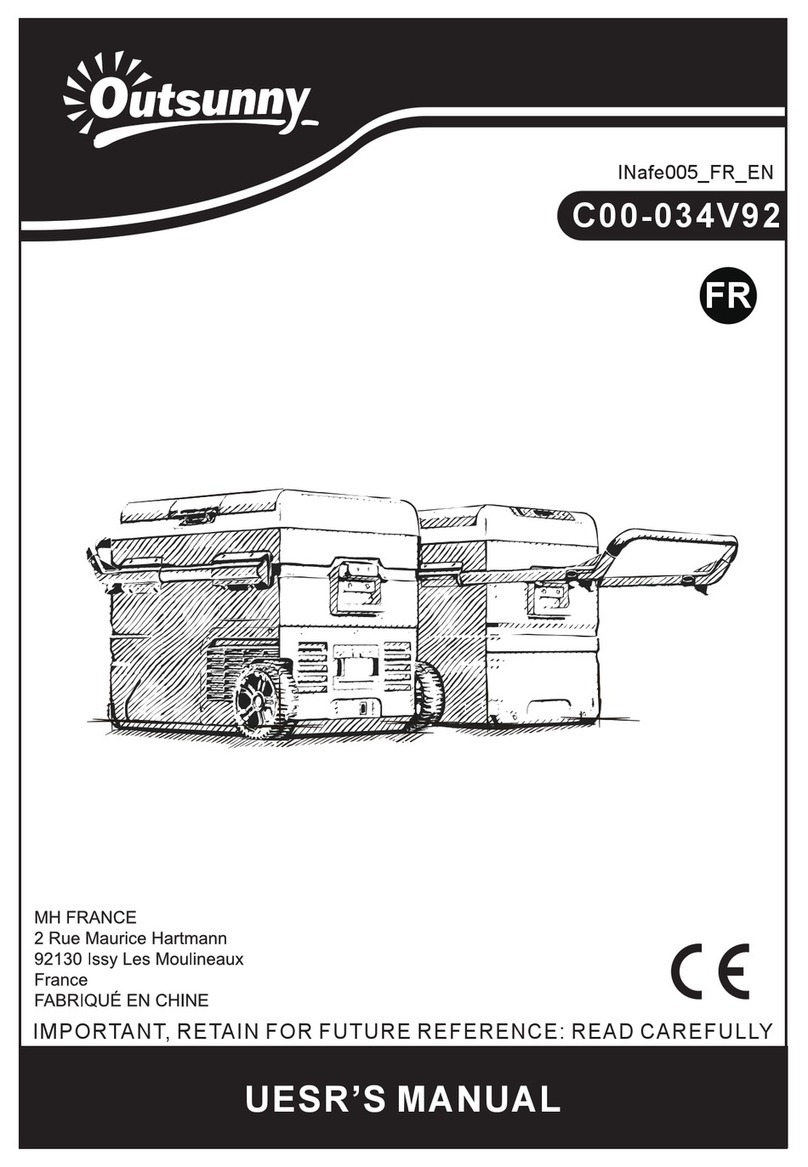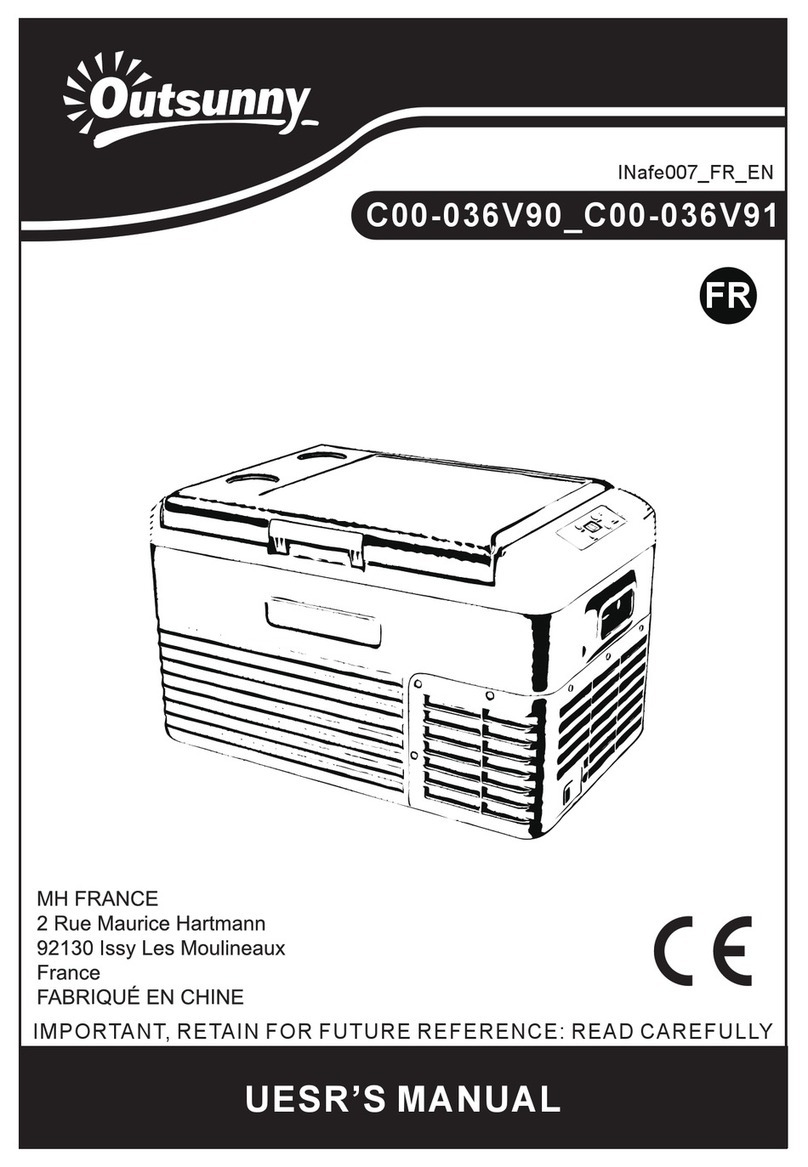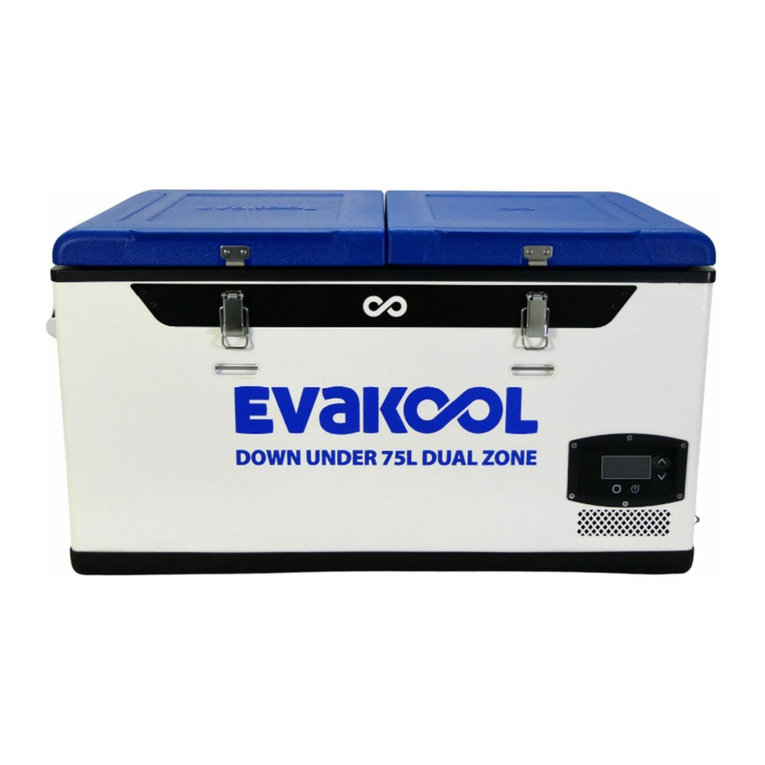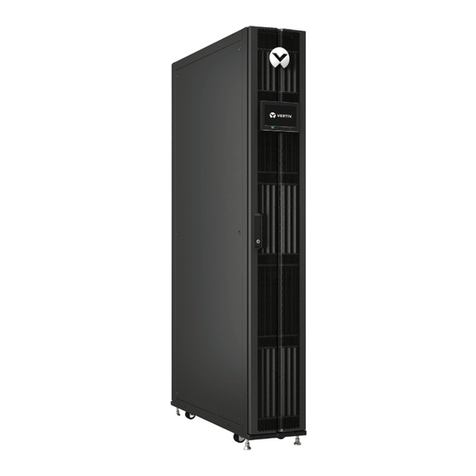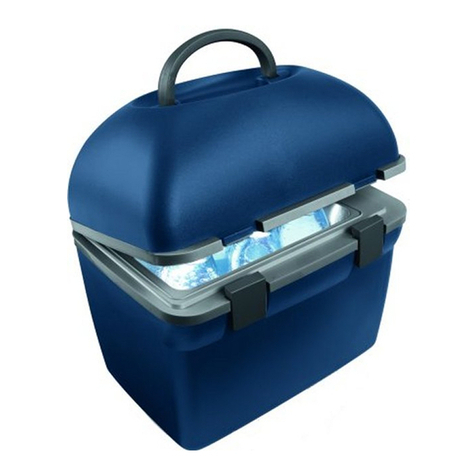Pfannenberg DTI Series User manual

Operating Manual
Attachment and Installation Cooling Units
DTS and DTI Series 6801
Standard Controller (SC) – 400 / 460 V, 3~
Original instruction manual – Version 1.0, February 2022

ENG
Operating Manual | Attachment and Installation Cooling Units | Standard Controller (SC) – 400 / 460 V, 3~ | 086100125 2/66
1About this manual........................................................................................................................................................ 4
1.1 Use and safekeeping ................................................................................................................................................ 4
1.2 Exclusion of liability................................................................................................................................................... 4
1.3 Target group............................................................................................................................................................. 5
1.4 Explanation of the notes............................................................................................................................................ 6
1.5 Marking of contents................................................................................................................................................... 7
1.5.1 Handling instructions ........................................................................................................................................... 7
1.5.2 Links and cross references .................................................................................................................................. 7
2Safety............................................................................................................................................................................ 8
2.1 Intended use............................................................................................................................................................. 8
2.1.1 Permissible usage conditions............................................................................................................................... 8
2.2 Foreseeable misuse.................................................................................................................................................. 9
2.3 Duty of the operator .................................................................................................................................................. 9
2.4 Terms of warranty................................................................................................................................................... 10
2.4.1 Returning units .................................................................................................................................................. 10
3Unit description.......................................................................................................................................................... 11
3.1 Unit structure .......................................................................................................................................................... 11
3.2 Scope of delivery .................................................................................................................................................... 12
3.3 Order options.......................................................................................................................................................... 12
3.3.1 Filter adapter (option) ........................................................................................................................................ 13
3.4 Functional description............................................................................................................................................. 14
3.4.1 Air circuit ........................................................................................................................................................... 14
3.4.2 Controller .......................................................................................................................................................... 15
3.4.3 Refrigeration circuit............................................................................................................................................ 16
3.4.4 Safety concept .................................................................................................................................................. 17
3.4.5 Condensate treatment ....................................................................................................................................... 18
3.5 Type plate............................................................................................................................................................... 19
3.6 Signs and symbols on the unit................................................................................................................................. 21
3.7 Technical data ........................................................................................................................................................ 22
3.7.1 Refrigeration circuit............................................................................................................................................ 22
3.7.2 Electrical data.................................................................................................................................................... 22
3.7.3 Dimensions ....................................................................................................................................................... 23
3.7.4 Other unit data .................................................................................................................................................. 23
4Assembly and initial commissioning ........................................................................................................................ 24
4.1 Safety information................................................................................................................................................... 24
4.2 Transport................................................................................................................................................................ 25
4.2.1 Transporting the cooling unit.............................................................................................................................. 26
4.2.2 Crane transport ................................................................................................................................................. 27
4.3 Storage................................................................................................................................................................... 28
4.4 Unpacking .............................................................................................................................................................. 28

ENG
Operating Manual | Attachment and Installation Cooling Units | Standard Controller (SC) – 400 / 460 V, 3~ | 086100125 3/66
4.5 Assembly................................................................................................................................................................ 29
4.5.1 General ............................................................................................................................................................. 29
4.5.2 DTS cooling unit assembly (side attachment)..................................................................................................... 30
4.5.3 Assembly of the DTI cooling unit (Installation).................................................................................................... 32
4.6 Electrical connection............................................................................................................................................... 35
4.6.1 Notes for connecting cables to the unit............................................................................................................... 35
4.6.2 Electrical circuit diagram.................................................................................................................................... 36
4.6.3 Connection compartment................................................................................................................................... 37
4.6.4 Setting the DIP-switch ....................................................................................................................................... 38
4.6.5 Door contact switch ........................................................................................................................................... 40
4.6.6 Collective fault signal......................................................................................................................................... 41
4.6.7 Mains connection .............................................................................................................................................. 42
4.6.8 Adapting the unit to the mains voltage ............................................................................................................... 44
4.6.9 Equipotential bonding connections and fuses..................................................................................................... 45
5Operation.................................................................................................................................................................... 46
5.1 General functions.................................................................................................................................................... 46
5.2 Operation of the cooling unit ................................................................................................................................... 47
5.3 Service interface..................................................................................................................................................... 48
6Service and maintenance........................................................................................................................................... 49
6.1 Safety information................................................................................................................................................... 49
6.2 General .................................................................................................................................................................. 50
6.3 Maintenance schedule ............................................................................................................................................ 51
6.4 Maintenance work................................................................................................................................................... 52
6.4.1 Cleaning............................................................................................................................................................ 52
7Rectification of operating faults ................................................................................................................................ 57
7.1 General .................................................................................................................................................................. 57
7.1.1 Error messages................................................................................................................................................. 58
8Decommissioning ...................................................................................................................................................... 60
8.1 Temporary decommissioning .................................................................................................................................. 60
8.2 Final decommissioning............................................................................................................................................ 60
9Dismantling and disposal .......................................................................................................................................... 61
9.1 Safety information................................................................................................................................................... 61
9.2 Dismantling............................................................................................................................................................. 62
9.3 Disposal ................................................................................................................................................................. 63
10 Spare parts and accessories ..................................................................................................................................... 64
11 Index ........................................................................................................................................................................... 65

ENG
Operating Manual | Attachment and Installation Cooling Units | Standard Controller (SC) – 400 / 460 V, 3~ | 086100125 4/66
1 About this manual
1.1 Use and safekeeping
NOTE
Read the manual before starting any work on the unit/plant.
Observe the following points:
•The manual is part of the unit and must always be available on the product and accessible to the operator. The
manual must be kept complete, close to the machine and accessible to the respective authorized persons.
•The unit can only be commissioned, operated and serviced properly with the help of this manual.
•This manual refers only to the product specified on the title page.
•This manual is subject to change in the course of technical progress.
•This manual is part of the scope of delivery.
•This manual is valid from transport until final disposal and must be observed.
•Always keep the manual in a legible condition.
•Leave the manual with the unit in the event of a resale.
•The unit can present unavoidable residual hazards for persons and property. Therefore, personnel must read,
understand and observe the manual before beginning any work. In addition, every person who works on and with
the unit in any way must be instructed and aware of the possible dangers.
•This manual is aimed only at instructed and authorized specialist personnel.
•The owner must ensure that all persons concerned have read and understood the manual before starting work.
•Illustrations in this manual serve for general understanding and can differ from the actual version.
1.2 Exclusion of liability
Pfannenberg is not liable for any errors in this documentation. Liability for indirect and direct damages that occur in connection
with the delivery or use of this documentation is excluded insofar as this is legally permitted.
Pfannenberg reserves the right to change this document, including the exclusion of liability, at any time without notice and is not
liable for any consequences of this change.

ENG
Operating Manual | Attachment and Installation Cooling Units | Standard Controller (SC) – 400 / 460 V, 3~ | 086100125 5/66
1.3 Target group
The different activities for handling the unit must be allocated to the target groups.
The necessary personnel qualifications are subject to different legal requirements according to the application site. The owner
must ensure that the applicable laws are observed. The admissible personnel and their minimum qualification are defined below
insofar as this is not regulated by law.
Observe the following points:
• Work on or with the unit/system may only be performed by suitable specialists.
• The personnel must be familiar with the pertinent standards, regulations, rules for the prevention of accidents and
operating conditions.
• The personnel must be instructed and trained for the work to be performed.
• The personnel must be capable of recognizing and avoiding hazards.
Person Activity Qualification Life phase
Load transport specialists Lifting/setting down and
transporting the system
Proven experience in the
handling of suspended loads
and load securing
Transport, disposal
Specialized personnel
(mechanics)
Mechanical work for:
Commissioning,
troubleshooting, maintenance
and decommissioning
Training as industrial
mechanics or an equivalent
professional qualification
Commissioning,
maintenance,
troubleshooting,
decommissioning,
disassembly
Specialized personnel
(electrician)
Electrical work Professional training in
electrical engineering or an
equivalent professional
qualification
Commissioning,
maintenance,
troubleshooting,
decommissioning,
disassembly
Operators and users Operation of the system By the owner based on the
instruction of an instructed
person
Commissioning, operation,
maintenance, troubleshooting
Specialized personnel
(disposal agent)
Proper disposal of the system Knowledge of the disposal
regulations applicable at the
application site
Decommissioning,
disassembly, disposal
Tab. 1: Target groups and required personnel qualification

ENG
Operating Manual | Attachment and Installation Cooling Units | Standard Controller (SC) – 400 / 460 V, 3~ | 086100125 6/66
1.4 Explanation of the notes
The warnings are indicated by signal words which express the degree of danger.
The warnings must be heeded to avoid accidents, injuries and property damages.
Explanation of the warnings in this manual:
DANGER
Brief description of the danger
The signal word DANGER indicates an imminent danger.
Failure to heed this warning will lead to severe injury or death.
WARNING
Brief description of the danger
The signal word WARNING indicates a possible danger.
Failure to heed this warning can lead to severe injury or death.
CAUTION
Brief description of the danger
The signal word CAUTION indicates a possible danger.
Failure to heed this warning can lead to minor to moderate injuries.
ATTENTION
Brief description
The signal word ATTENTION indicates possible property damages.
Failure to heed the warning can lead to damages to the unit or plant.
NOTE
The signal word NOTE indicates further information about the unit or its use.

ENG
Operating Manual | Attachment and Installation Cooling Units | Standard Controller (SC) – 400 / 460 V, 3~ | 086100125 7/66
1.5 Marking of contents
1.5.1 Handling instructions
Handling instructions are indicated in this manual as follows:
Requirements
Requirements and additional warnings
Required tools and materials
Tools and materials required for handling
Procedure
1. <Handling steps>
2. …
–<Intermediate result / Further instructions>
3. …
<Final result>
1.5.2 Links and cross references
Links and cross references are indicated in this manual as follows:
•If this document is available in digital form, the links are interactive. A CLICK will bring you to the desired target.
–The button combination <ALT> + <Cursor left> always returns you to the starting point.
•The table of contents is also interactive.
Cross references (example)
For further information, see section "Links and cross references", page 7.

ENG
Operating Manual | Attachment and Installation Cooling Units | Standard Controller (SC) – 400 / 460 V, 3~ | 086100125 8/66
2 Safety
2.1 Intended use
The Pfannenberg add-on and built-in cooling units of the DTS and DTI series are stationary cooling units for heat dissipation
from switch cabinets. They are available in two versions:
• The DTI cooling units are installed partly sunken into the side or door.
• The DTS cooling units are mounted on the side or door.
WARNING
Risk of injury due to impermissible use of the units.
Improper use of units can lead to serious accidents.
• Only use cooling units in stationary operation.
The DTI/DTS-cooling units are only approved for stationary operation.
As cooling units of protection class IP 55, the cooling units are largely dust-proof.
Limitation: Dust can penetrate despite this under permanent exposure. The cooling units withstand splash water but not a
continuous water jet.
The colling units are available with different cooling capacities. For exact capacity data, see chapter "Refrigeration circuit",
Page 22.
The cooling units have a cut-out compatibility with air/air heat exchangers and air/water heat exchangers. The use of aluminum
filters, felt filters or bellows filters is possible with an additional adapter.
The cooling units are available with different unit controllers. Cooling units with a Standard Controller (SC) or a Multi-Controller
(MC) are available. These controllers are control unit for setting refrigeration functions and operating data. They also enable
readout of system messages and diagnostic data.
The Multi-Controller (MC) is additionally equipped with a Multimaster function and an energy-saving mode.
• For detailed data of the controller, see chapter "Technical data", Page 22, "Electrical connection", Page 35 and
"Operation", Page 46.
All Pfannenberg cooling units are RoHS compliant and free from:
• Silicone compounds
• PCT, asbestos, formaldehyde, cadmium
• Substances that cause wetting defects
2.1.1 Permissible usage conditions
• The permissible ambient air temperature of the DTI/DTS cooling units is +10 … 55 °C (+50 … 131 °F).
• The permissible storage temperature of the DTI/DTScooling units is -20 … +70 °C (-4 … +131 °F).
• The operation of the DTI/DTS cooling units is only permissible for stationary assembly and closed switch cabinets.

ENG
Operating Manual | Attachment and Installation Cooling Units | Standard Controller (SC) – 400 / 460 V, 3~ | 086100125 9/66
2.2 Foreseeable misuse
The following points describe a foreseeable misuse of the unit:
• Use of the unit as a storage place, work platform.
• Attachment of transport aids.
• Installation in unsuitable locations.
• Outdoor operation.
• Operation outside of the permissible technical data. See section "Technical data".
• Operation without or with damaged sub-assemblies which serve for the safety of persons and the unit/plant.
• Use of cooling media not listed and approved in the "technical data".
• Cooling of media and objects not intended for operation of the unit.
• Blocking of the ambient air inlets and outlets by set down objects for example.
2.3 Duty of the operator
• The operator must ensure that the cooling units are only used for their intended purpose and that all hazards pertaining
to the life and health of users or third parties are avoided. The accident prevention guidelines and safety regulations must
also be observed.
• Unit faults must be responded to immediately.
• The owner must ensure that all users have read and understood this operating manual.
Non-compliance with this operating manual will void the warranty. The same applies if improper work has been carried out on
the unit by the customer and/or third parties without the consent of the manufacturer.

ENG
Operating Manual | Attachment and Installation Cooling Units | Standard Controller (SC) – 400 / 460 V, 3~ | 086100125 10/66
2.4 Terms of warranty
ATTENTION
Loss of warranty!
Loss of warranty due to spare parts from other manufacturers.
•Only original parts are subject to quality control by the manufacturer.
•The use of spare parts from other manufacturers will lead to loss of warranty.
•Only use original manufacturer parts to ensure safe and reliable operation.
The warranty does not apply or shall expire in the following cases:
•Improper use of the unit.
•Non-compliance with the operating conditions or non-observance of the operating manual.
•Irregular maintenance of the cooling units.
•Damage due to failure to observe the maintenance recommendations.
•Damage to cooling units caused by dirty or blocked filters.
•Damage due to unauthorized opening of the refrigeration circuit.
•Modifications made to the unit or any change in the serial number.
•Transport damage or other accidents.
•Replacement of parts by unauthorized personnel.
2.4.1 Returning units
The following must be observed to assert warranty claims and to return the unit:
•Attach a precise description of the defect and the SRO (RMA) number assigned by Pfannenberg to the cooling unit.
•Enclose proof of purchase (copy of delivery note or invoice).
•Send the cooling unit with all supplied accessories, in original box or equivalent packaging, free of transport charges and
insured.
•Observe transport instructions, see section "Transport", Page 25.

ENG
Operating Manual | Attachment and Installation Cooling Units | Standard Controller (SC) – 400 / 460 V, 3~ | 086100125 11/66
3 Unit description
3.1 Unit structure
The Pfannenberg add-on and built-in cooling units of the DTS and DTI series are designed for heat dissipation from switch
cabinets. Sensitive components in the switch cabinet are protected. Condensate produced during cooling is discharged through
a built-in system.
• The cooling units operate with refrigerant that is very difficult to ignite and is not harmful to the ozone layer.
Fig. 1: Unit structure (example DTS cooling unit)
1 Unit cover
2 Display unit (SC)/control unit (MC)
3 Condenser
4 Condenser fan (external)
5 Condensate drain
6 Hight pressure switch
7 Compressor
8 Evaporator fan (internal)
9 Connection compartment with cover
10 Evaporator (internal)
11 Temperature sensor TS2 (only for MC-Controller)
G00079

ENG
Operating Manual | Attachment and Installation Cooling Units | Standard Controller (SC) – 400 / 460 V, 3~ | 086100125 12/66
3.2 Scope of delivery
The scope of delivery consists of:
• DTI/DTS cooling unit
• Brief operating instructions cooling unit
• Accessory kit: According to unit type - e.g. seal, fixing material, electrical plug connectors
• Special accessories if necessary
3.3 Order options
ATTENTION
Damage to the unit!
Damage to the unit due to non-genuine spare parts.
• Only original parts are subject to the manufacturer’s quality control.
• For safe and reliable operation, use only original parts of the manufacturer.
The Pfannenberg part number for spare parts can be found in chapter "Spare parts and accessories", Page 64.
An optional extension by a filter adapter for different filter mats (felt filter, pleated filter and metal filter) is available.
• The Pfannenberg part number for accessory orders can be found in chapter "Spare parts and accessories", Page 64.

ENG
Operating Manual | Attachment and Installation Cooling Units | Standard Controller (SC) – 400 / 460 V, 3~ | 086100125 13/66
3.3.1 Filter adapter (option)
Fig. 2:Filter adapter on the cooling unit
For permanent protection of the external air circuit from contamination, the optional filter adapter (1) can be fitted with a filter
mat (2) at the air inlet (3) of the cooling unit.
The filter adapter (1) is simply clipped into the air inlet (3). Only one filter adapter per unit is needed. All filter types are suitable
for the adapter.
Order number Description
18310000151 Filter adapter, RAL 7035
18300000147 Felt filter (standard, dusty air without oil vapors)
18300000148 Pleated filter (longer life, dusty air without oil vapors)
18300000149 Aluminum filter (oily air)
Tab. 2: Order information filter adapters and filter mats
G00052

ENG
Operating Manual | Attachment and Installation Cooling Units | Standard Controller (SC) – 400 / 460 V, 3~ | 086100125 14/66
3.4 Functional description
3.4.1 Air circuit
CAUTION
Risk of burns
Risk of burns due to high temperatures at the ambient air outlet. The air outlet can get very hot depending on the ambient
temperature.
•Do not hold any parts of the body directly in front of the ambient air outlet (A).
Front view Side view
Fig. 3: Air circuit switch cabinet DTI/DTS
A Ambient air outlet
B Ambient air inlet
C Hot air inlet (switch cabinet)
D Cold air outlet (switch cabinet)
1 DTI unit cover
2 Switch cabinet
3 DTS unit cover
NOTE
The top section of Fig. 3 shows the DTI cooling unit (1) and the bottom section a DTS cooling unit (3).
G00001-01

ENG
Operating Manual | Attachment and Installation Cooling Units | Standard Controller (SC) – 400 / 460 V, 3~ | 086100125 15/66
3.4.2 Controller
The controllers are control units for setting refrigeration functions and operating data. They allow readouts of system messages
and diagnostic data.
The controllers have a service interface at which different configurations are possible.
They also have a connection for collective fault signals.
Fig. 4: Operating display Standard-Controller (SC)
Cooling units with a Standard-Controller (SC) have an indicator unit with a green LED-light (1).
The indicator unit is on the unit cover. Steady lighting of the green LED-light (1) when mains voltage is applied indicates fault-
free operating mode.
The LED light (1) starts flashing in the event of an operating fault or malfunction. For details of error messages, see "Error
messages", Page 58.
3.4.2.1 DIP-switch
Position of the controller
DIP-switch
Fig. 5: DIP-switch on the SC-Controller
1 SC-Controller 2 DIP-switch
The DIP-switch on the controller facilitates the setting of the target and limit values for temperatures.
•Selection of the temperature unit (°C / °F)
•Selection of the temperature target and limit values.
For factory setting and adjustment possibilities, see "Setting the DIP-switch", Page 38.
G00002
G00003-01
Störung/
failure/défaut
2 1
ok
654 3
DIP-Switch
ON
1 2 3 4

ENG
Operating Manual | Attachment and Installation Cooling Units | Standard Controller (SC) – 400 / 460 V, 3~ | 086100125 16/66
3.4.3 Refrigeration circuit
Fig. 6: Refrigeration circuit
1 Condenser
2 Filter dryer
3 Expansion valve
4 Evaporator
5 Temperature sensor
6 Evaporator fan (internal)
7 Compressor
8 Electronic controller
9 Display unit (SC)/control unit (MC)
10 Hight pressure switch
11 Condenser (external)
The cooling units consist of different components, see Fig. 6.
• The compressor (7) compresses the refrigerant with high pressure. The temperature rises.
• This heat is dissipated into the ambient air in the condenser (1). The refrigerant becomes liquid.
• The condenser fan (11) sucks in room air through the condenser (1) and discharges it into the ambient air.
• If the refrigerant passes through the expansion valve (3), there is a drop in pressure.
• In the evaporator (4), the refrigerant draws heat from the air inside the cabinet and evaporates it. The air inside
the cabinet is cooled and dehumidified.
• The evaporator fan (internal) (6) sucks in the air from inside the cabinet through the evaporator (4) and feeds it
back into the switch cabinet as cool air.
The cooling units are controlled by a temperature sensor (5). It measures the air temperature inside the switch cabinet.
G00004-01
TC
PC

ENG
Operating Manual | Attachment and Installation Cooling Units | Standard Controller (SC) – 400 / 460 V, 3~ | 086100125 17/66
3.4.4 Safety concept
WARNING
Risk of injury due to modified safety devices.
Non-functional, modified or defective safety devices lead to serious accidents.
•All modifications to the unit and especially the safety devices are prohibited.
•In case of defective safety devices, shut down the unit immediately and take it out of operation.
3.4.4.1 Safety devices
•The cooling units have a tested pressure switch in accordance with EN 12263. The pressure switch reacts to a pressure
increase in the refrigeration circuit by switching off automatically.
•The fans and compressors are protected against overloading and overheating. For example, the compressor is protected
against overspeeding.
3.4.4.2 Additional protection function
Only cooling units with antifreeze option.
•The compressors and fans switch off if there is a danger of freezing.
•The unit must be restarted to exit this switch-off function.

ENG
Operating Manual | Attachment and Installation Cooling Units | Standard Controller (SC) – 400 / 460 V, 3~ | 086100125 18/66
3.4.5 Condensate treatment
CAUTION
Danger of slipping on spilled condensate
Danger of slipping on condensate spilling onto the floor from the condensate drain hose.
•Collect condensate from the condensate drain hose.
ATTENTION
Damage to the switch cabinet components by formation of condensate
Switch cabinet interior temperatures below the dew point of the ambient air or damaged switch cabinet seals can lead to
excessive condensate formation.
•Check the switch cabinet seals regularly to avoid excessive formation of condensate due to penetrating ambient air.
•Install a door contact switch to reduce formation of condensate when the switch cabinet is open.
View from below at an angle
Fig. 7: Condensate drain nozzle (example, DTI cooling unit)
1 Cooling unit 2 Condensate drain hose
Condensate can form when the evaporator cools down. The condensate is drained to avoid damage to the switch cabinet and
the cooling units. The integrated condensate evaporator discharges the condensate into the ambient air.
For safety reasons, the condensate evaporator has a drain nozzle with drain hose (2) through which the excess condensate is
discharged from the unit.
The condensate emerging from the drain hose (2) can be collected in the condensate collection bottle available as an accessory
(see "Spare parts and accessories", Page 64).
G00025

ENG
Operating Manual | Attachment and Installation Cooling Units | Standard Controller (SC) – 400 / 460 V, 3~ | 086100125 19/66
3.5 Type plate
WARNING
Risk of injury
Risk of injury due to failure to heed the type plate specifications.
•Always observe the information on the type plate when installing and maintaining the units.
NOTE
•The type plate is on the back of the cooling unit housing.
•The figure shows the standard design adopted by EU member states. The type plate design may differ in other
countries.
Fig. 8: Type plate (example)
1 Manufacturer address
2 QR code
3 Designations/approvals
4 Refrigerant notes: Hermetically sealed,
Contains fluorous greenhouse gases recorded in the
Kyoto Protocol
5 Refrigerant/quantity
6 Housing protection type/NEMA/UL protection
classification
G00005-01
high pressure
kW
rated
start
rated
I
p
max
low pressure
A35 A50
bar
gG
A
P
Made in Germany
el
A
kW
sens
A
Q
kW kW
P
Hermetisch geschlossen / Hermetical sealed
Enthält vom Kyoto-Protokoll erfasste fluorierte Treibhausgase
Contains fluorinated greenhouse gas according to Kyoto-Protocol
A35 A35
kW
Outside - IP24
kW
Q
Pfannenberg GmbH
Werner-Witt-Straße 1
D-21035 Hamburg
www.pfannenberg.com
R134a -
g
GWP = 1430
CO2e t
EER
el
/
sens
/
/
IP Code IEC 60529
/ /
/
/
A
/
/
A
U
I
MCAMOP
A
A
EER
Inside - IP55
/
TYPE12 UL 50 INTERFACE TO ENCLOSURE ONLY
kW
kW
*
60Hz
only (*)
*
*
bar
AA
W
*
HP
*
Cond. FLA HP
*
*
A
Comp. RLA
*
*
W
A
LRA
Evap. FLA

ENG
Operating Manual | Attachment and Installation Cooling Units | Standard Controller (SC) – 400 / 460 V, 3~ | 086100125 20/66
Value Description
Type Unit type
P/N Part number
S/N Serial number
Urated Rated voltage/frequency
Irated Nominal current
Istart Starting current
gG Fuse
Evap. FLA / HP Evaporator fan Full Load Amps / horse power
Full-load current consumption of the evaporator fan/capacity of the evaporator fan in HP
Cond. FLA / HP Condenser fan Full Load Amps / horse power
Full-load current consumption of the condenser fan/capacity of the condenser fan in HP
Comp. RLA / LRA Compressor Rated Load Amps (RLA) / Locked Rotor Amps (LRA)
Nominal current of the compressor/blocking current of the compressor
A35 / A35
A50 / A35
External ambient temperature/temperature in the switch cabinet
Pel Electric power consumption
Qsens Cooling capacity
EER Ratio between power consumption and emitted cooling capacity (Energy Efficiency Ratio)
MOP* Maximum Overcurrent Protection
MCA* Minimum Circuit Ampacity
Pmax Refrigerant pressures
GWP Global warming potential (Global Warming Potential) of the refrigerant
CO2e CO2equivalent of the refrigerant filling
Tab. 3: Type plate data
*Data for UL-approved units on the design of the protection (MOP) and cable cross-sections (MCA).
This manual suits for next models
3
Table of contents
Other Pfannenberg Cooling Box manuals
